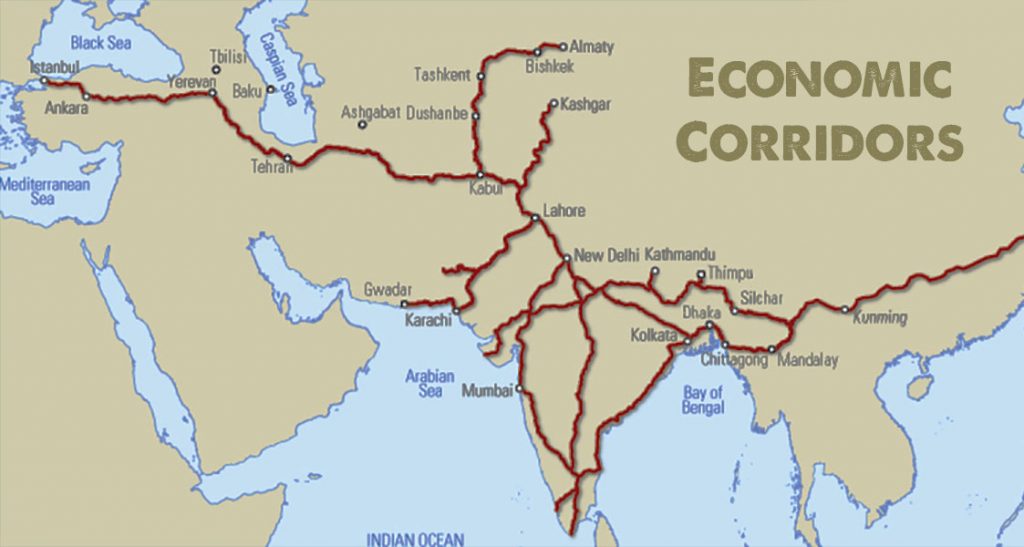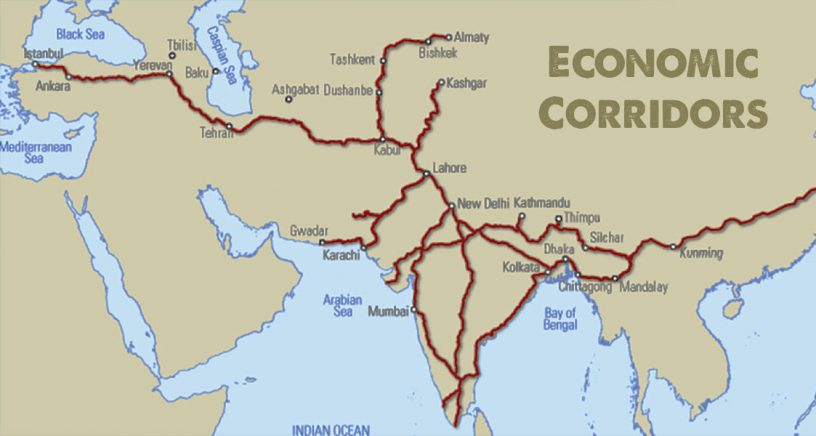
Developments of economic corridors in the South Asian region are associated with several gains in terms of the creation of employment opportunities, investments and improvement of living standards, says the study.
Authors
Pankaj Jha, Professor and Associate Dean (Research), Jindal School of International Affairs, O. P. Jindal Global University, Sonipat, Haryana, India.
Srimal Fernando, Research Fellow at O.P. Jindal Global University, Sonipat, Haryana, India; and Advisor/Global Editor of Diplomatic Society for South Africa in partnership with Diplomatic World Institute (Brussels).
Abstract
The growth of economic corridors in developing regions has become instrumental in boosting economic growth and infrastructure. Economic corridors integrate existing road and rail networks to build effective multimodal transportation networks within a particular geographical setting with the aid of quality distribution networks, logistics and infrastructure.
This helps in interlinking various markets and production centres of respective countries. This article investigates the influence of economic corridors in promoting sustainable as well as economic development in the South Asian region.
The primary data for the article was collected using semi-structured questionnaires for local respondents and interviews that were conducted with key informants across South Asian region.
According to the research conducted amongst informed individuals related to transport corridors and economic hubs in the region, it was found that there is direct correlation between the establishment of economic corridors and sustainable development.
The article examines the implication of economic corridors on their livelihood, in general, and to the select South Asian economies.
The findings revealed that the developments of economic corridors are associated with several gains in terms of the creation of employment opportunities, investments and improvement of living standards. This study emphasises the potential of developing economic corridors in the region and contributes to the available literature on the subject matter in South Asia.
Published in: India Quarterly: A Journal of International Affairs
To read the full article, please click here


